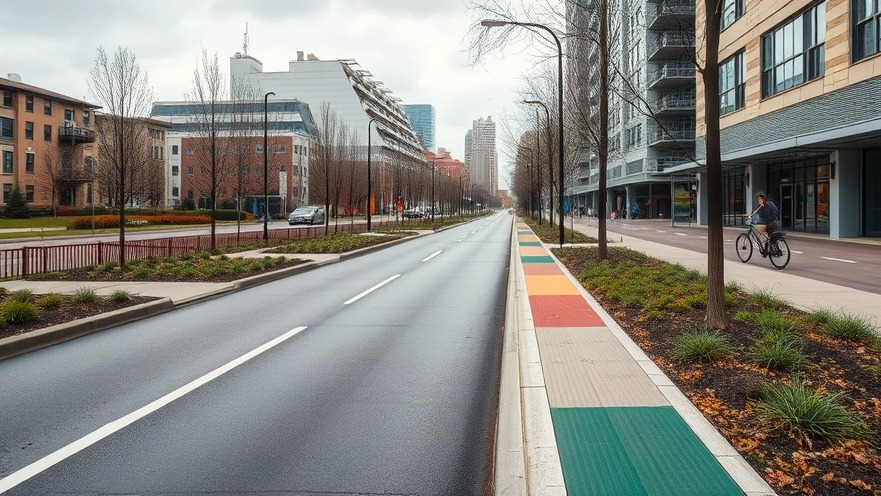
San Antonio's Complete Streets Policy: A Model for Urban Planning
San Antonio has made headlines recently by securing the top position in a nationwide report evaluating complete streets policies, an honor that underscores the city's commitment to enhancing urban transportation infrastructure. The report, which reviewed 43 policies from across the country, ranked San Antonio's policy with a score of 96 out of 100, placing it ahead of cities like Nashville, Tennessee, and Clyde, Ohio.
Understanding the Complete Streets Framework
The essence of the Complete Streets approach lies in its inclusive vision for urban environments, emphasizing safe and equitable access for all users regardless of their mode of transportation—be it walking, biking, or driving. The adaptation of this policy in San Antonio is significant given its intention to integrate diverse transportation modalities into a cohesive urban fabric. San Antonio’s Transportation Department is currently developing a toolkit to assist public agencies and developers in implementing these designs effectively. As Catherine "Cat" Hernandez, director of the Transportation Department, noted, this toolkit aims to facilitate the creation of safer streets that cater to various transportation needs.
The Impact of Advocacy Groups
This achievement is not solely the result of policy reforms within city governance; community advocacy groups have played a pivotal role in championing Complete Streets initiatives. Joey Pawlik, the executive director of ActivateSA, emphasized the importance of community engagement in shaping these policies. By mobilizing residents and stakeholders, ActivateSA has helped ensure that the Complete Streets Coalition reflects the diverse voices within San Antonio. This grassroots support has proved essential in advocating for a safer, healthier city.
Contributions to Public Health and Safety
The adoption of a robust Complete Streets policy is aligned with broader public health goals. Well-designed streets can significantly reduce traffic injuries and fatalities, particularly among vulnerable populations like pedestrians and cyclists. Furthermore, the integration of green spaces and bike lanes promotes physical activity and enhances mental well-being. As more visitors and residents navigate the city through various means, a safer, more enjoyable environment encourages community engagement and fosters a sense of belonging among its inhabitants.
The Future of Urban Mobility in San Antonio
Looking ahead, San Antonio's successful implementation of the Complete Streets policy may signal a transformative phase for urban mobility. With initiatives like a recently approved multimodal transportation commission, the city is not only addressing the immediate needs of its population but also planning for future developments in urban transport. This foresight into adapting and advancing the city’s transport systems showcases San Antonio's resolve to remain a leader in urban planning.
Conclusion: A Path Forward for Urban Centers
The recognition of San Antonio's Complete Streets policy is a testament to effective urban planning that prioritizes the needs of all citizens. As cities across the nation grapple with rising vehicular traffic and public health concerns, adopting comprehensive policies like San Antonio's could pave the way for safer, more resilient communities. As you engage with and follow local developments, consider how your community's infrastructure influences daily life, and advocate for inclusive policies that promote well-being for all.
 Add Element
Add Element  Add Row
Add Row 



 Add Row
Add Row  Add
Add 


Write A Comment